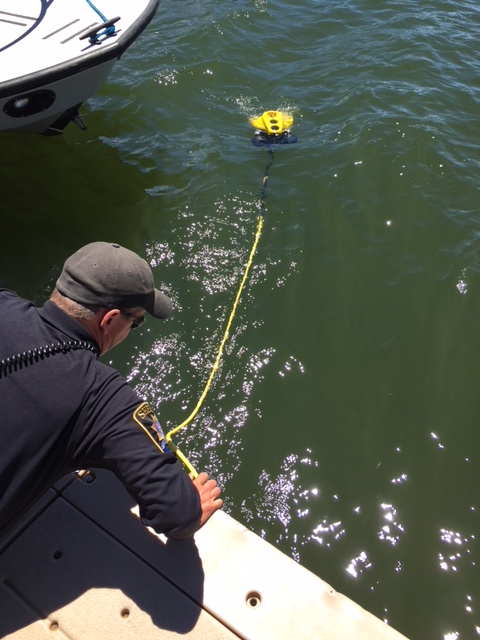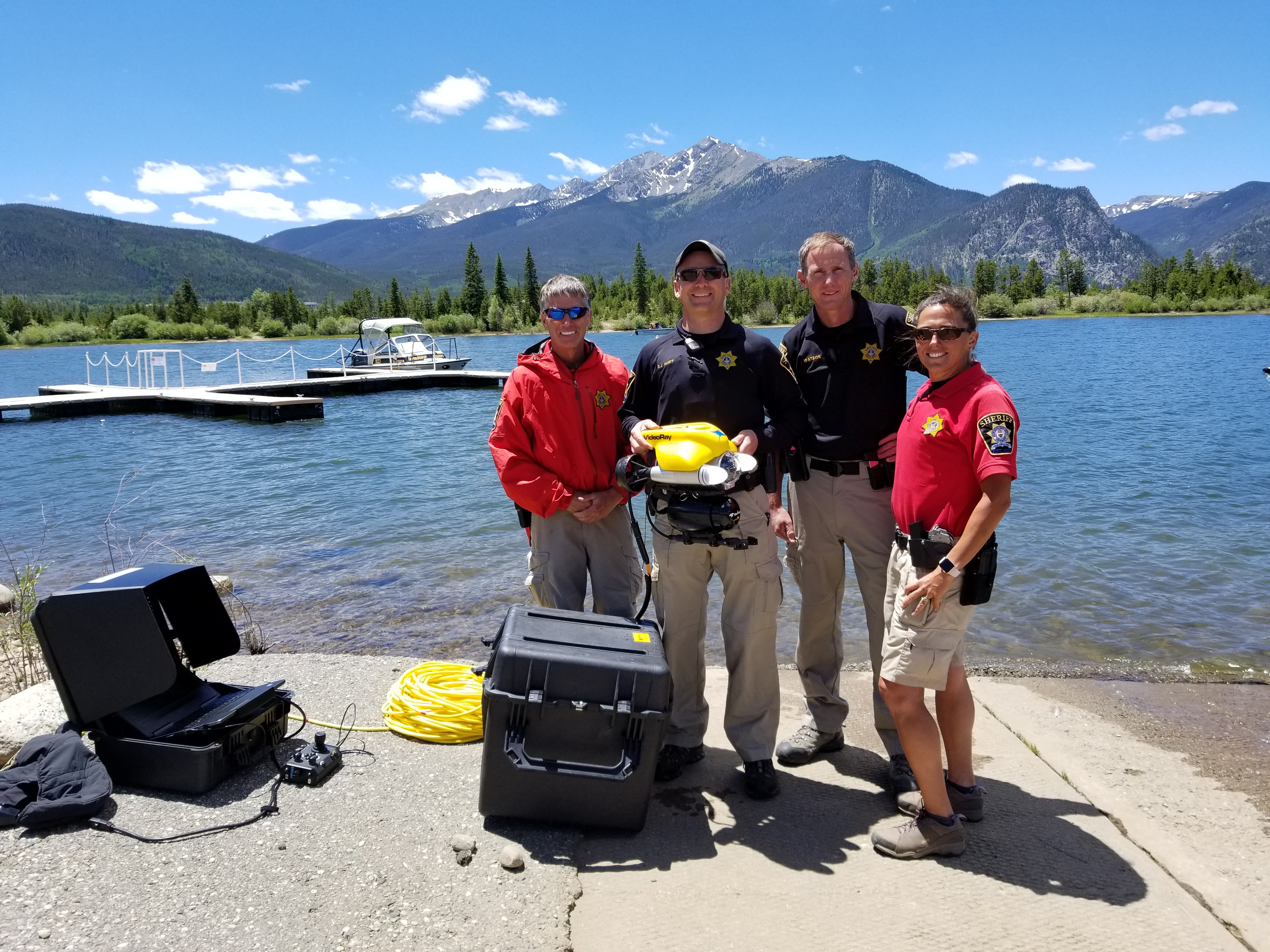
Underwater drone takes the pressure off dive teams
Diving in Colorado’s high-altitude lakes and reservoirs requires special training and equipment, making it difficult to safely retrieve something that’s gone into the frigid mountain waters.
But the Summit County Sheriff’s Office recently bought a device that doesn’t mind the cold or the altitude.
It’s a Remote Operated Vehicle, or ROV Underwater System, that’s towed on a cable behind a boat.
The drone carries sonar, lights and camera systems to spot items — such as a car, boat engine or body — in the water. The drone also is equipped with a claw that can grab onto items and pull them to the surface.
“It has an underwater, side-scan sonar system,” said Sgt. Mark Watson with the Summit County Sheriff’s Office.
“It’s like a torpedo that we tow behind our boat to get an image of the lake floor," he said. "We wanted something with a camera and a claw so we could go deeper than the divers can go. It’s another tool in our toolkit."
The ROV, made by VideoRay, based in Pennsylvania, can dive to 1,000 feet, Watson said.
Dillon, the largest storage reservoir for Denver Water, is 280 feet deep at its deepest point. But it’s hazardous for divers to go below 80 feet because of the reservoir’s altitude, about 9,000 feet above sea level, Watson said.
Below 80 feet, “you can’t get down there without using specialized drivers with training and equipment, and that can be expensive,” Watson said.
The drone’s purchase stemmed from the death of Adam Brown, a 26-year-old Frisco resident, who drowned in Dillon Reservoir in 2008 after falling from a boat. His body wasn’t recovered for three days due to difficulties getting a dive team in place.
Money for the device, which cost about $60,000, came from several sources, including private donations and a memorial fund set up by the Brown family. The Dillon Reservoir Recreation Committee gave nearly $35,000 toward the purchase of the device, Watson said.
DRReC manages recreation activities on and adjacent to Dillon Reservoir. The committee includes representatives from Denver Water, the U.S. Forest Service, Summit County and the towns of Dillon and Frisco.
While the Sheriff’s Office has a drone, don’t expect to see more ROVs in the area.
For recreation safety and the protection of the reservoir from invasive species, Denver Water prohibits the unauthorized use of drones on or around any of its facilities. Unauthorized use of drones may result in the device being confiscated and trespassing charges being filed.
Swimming also is prohibited in Dillon Reservoir because the water is too cold for prolonged contact. Water temperatures average in the low 60s most of the year.
The Sheriff’s Offices’ drone is small and easily deployed, weighing in at about 5 pounds and measuring less than 2 feet long and about 1 foot wide.
“You can tuck it in the back of your car and go, and it also can go into small areas,” Watson said. “What it can do is amazing. With the sonar you can find items, then get up close to the object and use the lights to see what it is with the camera.”
The department hopes the device will enable deputies to find and recover bodies or other items quicker. The Summit County Sheriff’s Department is the only public agency in the state with an underwater drone.
“It’s not intended to replace divers, but its camera can be used to find items. We can use the side-scan sonar to locate things, mark the location and then call the dive team if needed — or try to grab the item with the claw,” Watson said.
It’s already been used to find a boat engine that fell into the water at Dillon and the body of a drowning victim in Steamboat Lake in northern Colorado in early June, Watson said, adding that it’s available to Denver Water if needed.
Denver Water in the past has used similar devices, equipped with powerful lights, to inspect underwater equipment used to operate the dam, said Darren Brinker, the organization’s chief dam safety engineer.
Depending on the needs, and the capabilities of the device, Denver Water might be interested in using the sheriff’s department’s device, Brinker said.


